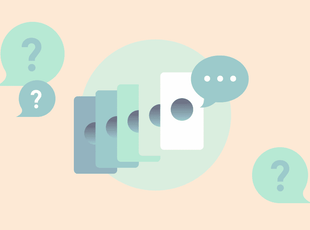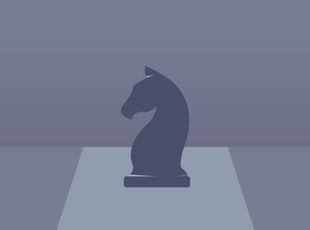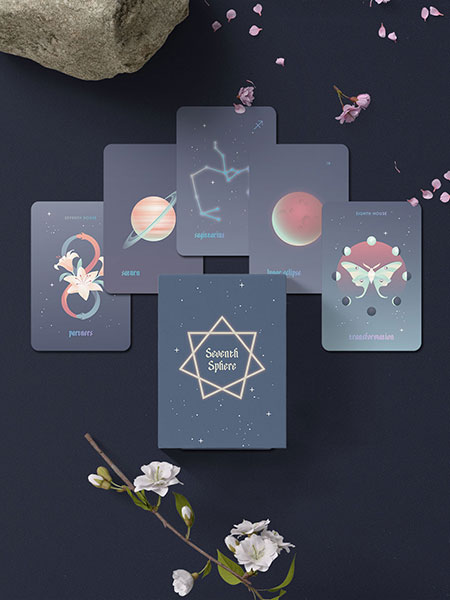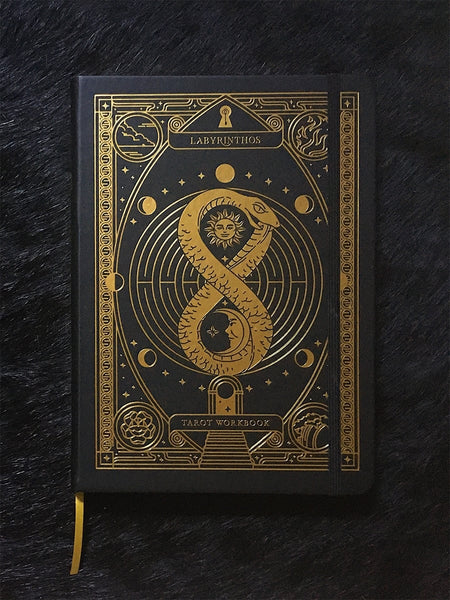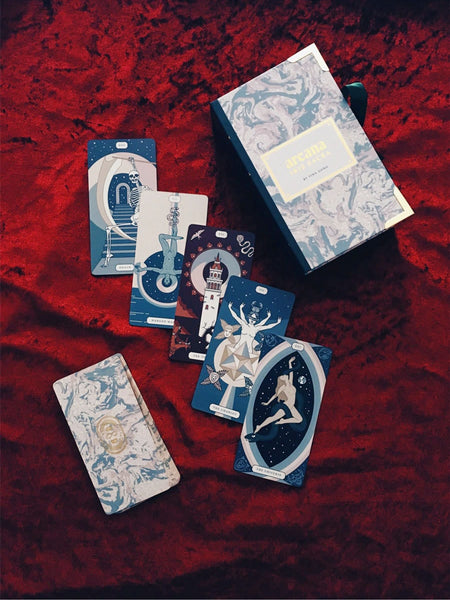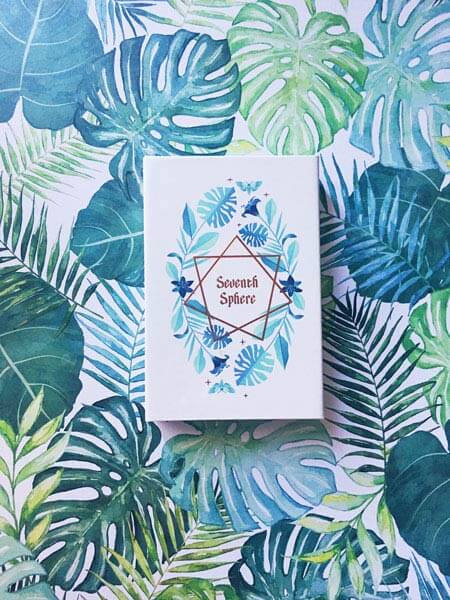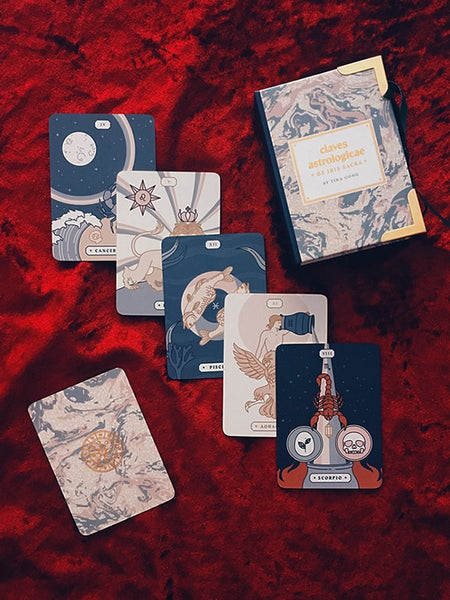✦ ✦ ✦
How to Read the Grand Tableau: A 36-Card Lenormand Spread
Published
With all 36 cards of the Lenormand laid out before you, it is very likely you may feel intimidated at first, having no idea where to begin. Still, there is no need to fear. The truth is - if you can read a Line of Five, or a Nine Card Spread - you can read the Grand Tableau. Just to remind you of some of the basic principles again, when reading through this guide, remember that cards are always read in pairs or strings.
We’re going to go through many layers of meanings. You can choose to use whichever of these best suits you and your question, so follow your own intuition and use this article, mix and match the methods as you see fit to develop your own voice as a reader.
Start by shuffling the cards and laying them out from left to right in lines of 8, one after the other. In the end, you should have 4 rows of 8 cards, with 4 cards in the last row, placed in the center.

Find the Significator in the Grand Tableau
Once all of them are before you, you need to locate the significator (28 Anima for a female and 29 Animus for a male) - this card will represent the querent and be the main focus of the entire reading.

Getting Started by Reading Pairs in the Grand Tableau
Your intuition will play a large part in forming the correct idea and assembling this seemingly kaleidoscopic jigsaw puzzle. For a beginner, sometimes the best way to go about it is to start at the upper left corner and keep going. Simplistic as it may seem, it is the best way to get over your fear, loosen up, and just read. As you keep pushing through, cards will start forming sentences, some short, some a bit longer, and tell you a story. This sort of free-form reading will help you overcome any blockages you may have and set you on your way to proficiency.
If you wish to follow certain rules, you can rest assured those belonging to the Line of Five and the Nine Card Spread apply. Pairs, corners, diagonals - you already know them all. For the sake of completion, we’ll list them here, too.
Start Learning Lenormand
Our email course is filled with easy to read guides, worksheets, and more. Plus, get a link to our Lenormand app!
Reading Horizontally, Vertically and Diagonally in the Grand Tableau
Several of the points that we used in the 9-Card spread will be in play again - in a modified version - here in the Grand Tableau. The cards that are to the significator’s left will represent the past, those to the right the future. The farther away the cards are from the significator are farther away in time, while those close are representative of the more immediate circumstances.

Similarly, the cards above the significator will tend to denote thoughts and ideas while those below will stand for unconscious forces.

Finally, the diagonals can be thought of as influences or possibilities, a mix of both horizontal and vertical forces. These diagonals will form an X, with the significator in the center. You can think of these diagonals as the following:
- Top Left Diagonal - Conscious Influences. Cards 4, 13 in the example.
- Bottom Left Diagonal - Unconscious Influences. Cards 29, 34 in the example.
- Top Right Diagonal - Conscious Possibilities. Cards 8, 15 in the example.
- Bottom Left Diagonal - Unconscious Possibilities. Card 31 in the example.

The Corners of the Grand Tableau in the Grand Tableau
We had some practice reading the corners of a spread when we faced the 9-Card Lenormand spread - so you can apply the same principles here.These “frame” cards (1, 8, 25, 32) can be helpful to glance at to get the context and the surrounding situation of the reading. You can choose to read this either as an big “X”, or go around the corners clockwise.

Reading Topics in the Grand Tableau in the Grand Tableau
If there is a particular area of concern you may have, locating its symbol in the spread will help you greatly. The Tree stands for health, House for home and family matters, Heart is love, Fox is your current job, Bear for your boss, the Anchor your career or life's calling, Fish corresponds to money, and Ship to travel. By looking at the cards surrounding the Heart, you will in effect be treating it as a mini Nine Card Spread, allowing yourself to go into detail on the topic of love.

Considering Distance, Direction and Position in the Grand Tableau
Considering the size of the Grand Tableau, it is good to mention to idea of distance. It happens so that, the closer a card is to your significator, the stronger influence it will have on it, and the farther away it may be, the less relevant it will be.
The concept of directionality is also of importance as some cards face one way or the other (in particular the people cards, but also the Whip, Scythe and Book) which then focuses their effect in one direction and thus modifies the meaning depending on how the other cards are positioned.
Reading with Lenormand Houses in the Grand Tableau
As if that wasn't enough, there is also the idea of so-called houses. If all the cards of the Lenormand were laid out in their correct numerical order, each card (or rather each position) would represent a "house" belonging to that card's domain. By laying out your regular reading, you can imagine superimposing your randomly ordered cards over such a pattern, with each card falling into a certain predetermined house. With a Stork in the house of House (change of abode?) or Dog in the house of Snake (a false friend perhaps?), you can see the added layers this technique can bring to any reading.

The Heart of the Matter of the Grand Tableau in the Grand Tableau
Like the smaller, building-block spreads that we used earlier, there is also the idea of a central theme in the Grand Tableau. In the smaller spreads that we looked at, like the 3-Card, 5-Card, 7-Card and 9-Card Lenormand spreads, this central theme would be the center card, which carries the underlying concern that is behind the reading. In the Grand Tableau, it is not just a single card, but rather, the four cards at the center of the spread. As usual, you would read these as pairs - giving you an even more specific theme behind your reading.

Predictive Timing in the Grand Tableau
Finally, when laying out the Grand Tableau in rows of eight cards, you’ll have 4 cards that will end up in the last row. These last 4 cards are sometimes known as the cards of fate - and can be used for predictive purposes. Generally, they apply to a timeframe ranging from 8-12 weeks from the present.

We know that this is quite a mouthful! This is a gentle reminder that though all these techniques are available, you don’t need to read with all of them. Starting out reading in pairs, to get comfortable and situated, or choosing the techniques that work best with your intuition, is absolutely fine. We do encourage you to explore all of them and see how they fit with your style.
These are the most general ways that we can look at a Grand Tableau spread, but we’ve also seen many more. The possibilities with the Grand Tableau are practically endless! What other techniques have you found that you’d like us to explore more? Feel free to comment below.
5 comments
-
Careline RamirezHi there, thank you so much for taking the time out to explain how to do this crazy reading! One question- if the querent identifies as non-binary or somewhere outside the realm of what is male/female, how would we discern the querent from the reading then?
-
JuliaThank you for this! I’m confused on what “anima” means in choosing the significator? How can you tell which is the significator?
-
LaurenThis is a great resource, thanks so much! I can’t remember where i came across it, but i read somewhere that some Lenormand readers interpret the rows of cards beneath the significator as those things that are under the seeker’s control, while the rows above them are things outside their ability to influence: So a significator at the top of the tableau means the seeker has a lot of power in the situation; while a significator at the bottom means the seeker’s largely being influenced by larger events, decisions being made ‘above them’ so to speak. But i feel like that method wouldn’t mix well with interpreting the column of cards the significator is in as conscious/unconscious, so maybe the reader should choose one or the other?
-
LanceIn a grand tableau how are cards that fall in their own house interpreted? (For example ‘Ship’ in the third house)
-
Angele FoustI adore your spreads. I just have a comment on diagonals. Unconcious possibilities should be Bottom Right instead of Bottom left. Its no big deal, probably just a typo. Thanks keep up the good work, Angele
